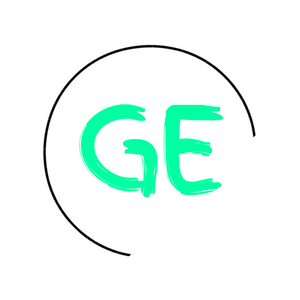Adaptability, Safety, Security, Social Acceptance, and Regulation of Solar Power
Contents
Introduction
Adaptability of Solar
Safety of Solar
Security of Solar
Social Acceptance of Solar
Regulation of Solar
Concluding Remarks
Bitesize Edition
Solar panels are readily seen on top of houses, and here in the UK, we see solar farms situated in rural areas. However, the pursuit of solar panels in urban areas is yet to be widely pursued. Having limited space and shade in high-rise cities ensures this is difficult, but if it can be achieved, the distance between demand and production being reduced will reduce grid losses.
The safety and security of solar panels are smaller aspects of this series, but still need to be addressed. Solar panels need to be installed and secured safely. Solar theft is on the rise (Up 22.5% in 2022 in the UK) and 650 workers were injured installing solar panels between 2011 and 2019 in the United States.
Solar panels are accepted by some as the finest thing since sliced bread. Solar panels are a great element of a diversified electricity production portfolio, but they aren’t the crème-de-la-crème. Like everything, there are trade-offs. We need solar power as part of the solution, but it isn’t the entire solution. The buildout of every energy and electricity production method possible is the entire solution, of which solar is a part.
On an individual level, to help residential areas implement solar panels into their lives, there are government grants and regulations that provide aid to the costs of installing solar panels, and then provide money back for excess electricity produced and supplied to the grid. If you want to know more about the potential of having your own solar panels, continue below!
Introduction
Upon scanning the contents section, it might appear that this could be a long post. It isn’t, it’s just tying a pretty little bow on my solar masterclass with some smaller sections I haven’t discussed yet. Check out more below.
Adaptability — Solar panels can be placed in a variety of locations, but are often seen on angled roofs since efficiency increases between 30–45 degrees. Solar panels can also be placed in fields, or even double-sided panels to take advantage of as much potential solar energy received as possible. However, research has been done on expansion into urban areas since placing demand and production in the same place would reduce grid losses. Aesthetics, limited space, and shade are key considerations to solar panel placement in urban areas and challenge solar panel adoption and adaptability in cities. Also, building architecture could lead to some buildings not even having the capability to possess solar panels. Grid integration and energy storage can facilitate the need for less urban-based electricity production, but more work is required in both sectors. For any solar cells, whether in urban or rural areas, data analytics, Internet-of-Things devices and artificial intelligence all have the potential to aid in monitoring and maintenance.
Photo by Christopher Burns on Unsplash
Safety — According to the Electrical Safety Foundation, 650 people were injured on the job between 2011–2019 in the US. It can be dangerous for workers if improper practices are adopted in installation. Live wires and safely navigating the height upon which solar panels are installed are important considerations. For cleaning or maintenance, there isn’t a switch to turn solar panels off, so this process needs to be carefully approached. Fires in solar panels number 15 fires per 1 million installations. 85 occur in toasters. Solar systems in this regard are less of a fire risk, but still, proper training is needed for them to be installed correctly. Finally, in the case of safety issues such as a fire, monitoring techniques such as sensors or camera equipment can ensure rapid responses to any issues. Having solar systems possess a rapid switch-off facility can limit the spread of issues.
Security — In residential areas, solar panels are often secured with locking fasteners which prevent them from being stolen or dismantled easily. For larger solar farms, alternative strategies such as surveillance cameras and motion detection lighting can be utilized to improve security. This might not seem like a conceivable issue, but in 2022, solar panel theft rose 22.5%, with 220 solar panels and 2 inverters stolen from a commercial poultry unit here in the UK. In case of this occurring, insurance will protect you. In extreme cases, human guards or secure perimeter fencing can further minimize the chances of theft.
Photo by pisauikan on Unsplash
Social Acceptance — Research has found that solar power is highly accepted by society, regardless of position in society. Opposition does exist in some spheres, but it’s rarely total opposition. Solar is a brilliant invention that will be a key technology of our future, but it can’t be the entire future. Baseload power is required until electricity storage and grid transmission improve. Innovation is coming, but when we can’t tell. So, we deal with the situation we have now. It needs to be understood that solar in its current iteration cannot power the entire world. Especially in some locations, when the sun is up, it cannot store enough spare electricity for later use. I’ll explore this more in my mathematical deep dive into solar over the coming weeks. Renewables have already been socially accepted as a key aspect of achieving climate goals. Whether we’ve set too extravagant goals or started too late is up for debate, but what is clear is that solar will be a piece of the puzzle that helps us reach these goals. The Climate Policy Info Hub describes the transition goals as “technically feasible”. It's technically feasible that I could set off to climb Everest tomorrow in my underwear, but there would be adverse effects for everybody involved in that endeavour. Just because something is technically feasible, doesn’t mean the consequences would outweigh the benefits. Cost-benefit analysis. Trade-offs. However, you like to describe them. All has to be carefully considered, not blindly pursued.
It’s important that I chose “Acceptance” as the paragraph heading. I think many accept solar as a part of our modern world and the energy transition. This, however, cannot become “social over-acceptance”, or “social dependence”. That’s when we get problems. Hence we need the future of the energy sector to be determined by engineers, not politicians.
We’ve seen the nuclear industry shattered by poor public opinion based on three disasters that were caused by human error. Baseload power is required, and this isn’t a nuclear preach, just like solar, it’s a part of the solution. All options available to us have to be part of the solution.
Photo by Li-An Lim on Unsplash
Regulation — There exists regulation towards solar companies in their operations, as well as regulation on the government legislature level to incentivize the pursuit of clean energy technologies such as solar power.
In the UK, the Renewable Energy Consumer Code (RECC) ensures renewable energy companies, which includes solar companies, pursue high-quality service. This can help to reduce many of the safety issues we discussed earlier. It’s important to check the installers of your solar panels are registered with the Renewable Energy Assurance Ltd scheme and the Microgeneration Certification Scheme. The Office of Gas and Electricity Markets (Ofgem) are the UK’s government regulator for electricity and natural gas markets and also oversees regulation in the solar power sector.
There are also government grants to help with the costs of these solar panels. Currently, we have the Energy Company Obligation 4 (ECO4) where households can receive free solar panels depending on criteria, as well as Solar Together, Home Upgrade Scheme (HUG2) seeing savings of 25% and a grant of up to £10,000 respectively.
In the United States, the Inflation Reduction Act includes a Renewable Energy Tax Credit that provides up to 2.75 cents per kWh in 2022 dollars (adjusted for inflation) for electricity generated from renewable energy sources.
Photo by Katie Moum on Unsplash
Concluding Remarks
This concludes the solar masterclass. I hope this has helped to increase understanding of the characteristics of solar power.
Next week, I’m going to do some mathematics surrounding either the wind power or solar power industry. I’ve not decided which I’ll do first but we’ll eventually do both, so come back next week for a mini surprise!
Thanks for reading! If you want more then subscribe on Substack for these posts directly to your email inbox. I research history, geopolitics, and financial markets to understand the world and the people around us. If any of my work helps you be more prepared and ease your mind, that’s great. If you like what you read please share with others.
Key Links
The Geopolitics Explained Podcast
Sources:
https://www.electricalsafetyfirst.org.uk/guidance/product-safety/solar-panels/
https://www.marley.co.uk/support/solar/how-safe-are-solar-panels
https://www.fluke.com/en-gb/learn/blog/renewable-energy/solar-power-safety
https://www.sciencedirect.com/science/article/abs/pii/S0263224123000301
https://www.sciencedirect.com/science/article/abs/pii/S0927024822005682
https://www.sciencedirect.com/science/article/abs/pii/S2214785322060758
https://www.greenlancer.com/post/solar-panels-theft#:~:text=Securing%20solar%20panels%20with%20locking,fasteners%20offer%20several%20key%20benefits%3A&text=Enhanced%20security%3A%20Unlike%20standard%20bolts,reducing%20the%20risk%20of%20theft.
https://www.insight-security.com/are-your-valuable-solar-panels-secure
https://www.safesitefacilities.co.uk/knowledge-base/solar-farm-security-guide
https://climatepolicyinfohub.eu/social-acceptance-renewable-energy.html
https://www.sciencedirect.com/science/article/pii/S1364032121003956#:~:text=Several%20studies%20have%20found%20high,16%2C36%2C38%5D.
https://www.sciencedirect.com/science/article/pii/S1364032121011345
https://www.mypoweruk.com/news/who-regulates-solar-panel-companies-in-the-uk/#:~:text=The%20Renewable%20Energy%20Consumer%20Code,also%20a%20TrustMark%20Scheme%20Operator.
https://www.independent.co.uk/advisor/solar-panels/solar-panel-grants#:~:text=Solar%20panels%20grants%2C%20like%20the,most%20of%20solar%20energy%20opportunities.
https://home.treasury.gov/news/press-releases/jy1830#:~:text=The%20Inflation%20Reduction%20Act%20modifies%20and%20extends%20the%20Renewable%20Energy,meet%20prevailing%20wage%20standards%20andwww.sciencedirect.com/science/article/pii/S0307904X18305687#bib0004




